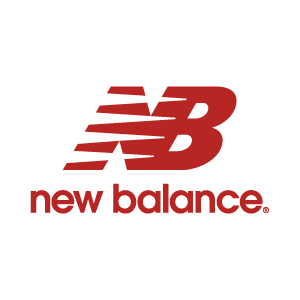3 evolving challenges apparel brands must overcome to be successful
October 30, 2024For apparel brands, there's never been a better time to implement a software solution that turns your data into a problem solver.
When it comes to apparel, we’re all consumers. As consumers, we’ve seen first-hand the huge amounts of change that has happened across the industry in the last decade or so. No longer are we solely heading to outlet malls or high streets to buy clothes. Instead, we’re shopping the latest fashions on our couches, our commutes, and even our bathroom breaks. With new fashions, new brands, and new shopping experiences popping up every day, it’s never the same experience twice.
However, for apparel brands, this poses several challenges. Not only do they have to contend with ever-shifting styles and fashions, but they also need to compete with more brands from home and abroad on more channels than ever. Products need to stand out like never before. Whether selling clothing, footwear, or accessories, brands need to create compelling, consistent, and compliant product experiences wherever a customer might find their products. But how do the top brands meet these challenges and succeed in this tough environment? Let’s find out:
1. Meeting expectations for exceptional product experiences
Unlike other everyday-use items, shopping for clothes and footwear has long been seen as an enjoyable experience. Indeed, while it might not be everyone’s pastime of choice, the idea of buying clothes while indulging in a little retail therapy holds a cultural significance that is simply not matched by the activity of shopping for other goods. Shopping for new clothes is to be enjoyed, not endured.
However, the rise of e-commerce has changed things. Instead of trying on garments in-store and feeling the material against our skin, apparel shopping is increasingly done digitally. Instead of searching the racks for our size or color, we are tapping on screens and expanding images for a better look. But this change in buying habits has not shifted our expectations when it comes to buying clothes. Far from it. Apparel buyers today still expect a high-quality product experience whether shopping online or in-store. After all, we still want to look great in our purchases.
New Balance, the global apparel and footwear brand, understood the need to replicate the high-touch product experience shoppers received in-store across their digital channels. New Balance also understood these experiences are built on a foundation of accurate and reliable product information, so they turned to the inriver PIM platform as their e-commerce partner. With the single source of truth for market-ready product information the PIM software offers, New Balance is now able to localize product content, syndicate information across all channels with a single click, and deliver reliable, consistent product information to every customer on every channel. The PIM also offers New Balance accelerated time-to-market and a solid base on which to diversify and innovate the digital experiences of their products without compromising on the quality of these experiences.
2. Unifying in-store and online buyer journeys
Today, we live in an omnichannel world, and that’s no more evident than when buying clothes and apparel. Whether we see product advertisements while scrolling social media, get tailored product recommendations on Google SERPs, or even walk into a brick-and-mortar store, the way we engage with apparel products is now a multi-touch journey from first interaction to making a purchase. To stay ahead of the growing competition, apparel brands need to be smart about how they build buyer journeys in an omnichannel world.
One key challenge facing apparel brands, whether they sell clothes, footwear, or accessories, has been unifying their digital and physical product experiences. While some consumers are happy to complete their entire buyer journey online, others prefer to research online before heading in-store to get a feel for the product, both literally and metaphorically. However, suppose the digital product they’ve researched online doesn’t quite match the physical product they find in-store. In that case, issues surrounding brand trust and reliability can quickly lead to a lost sale.
Pandora, a leading global name in the jewelry industry, faced significant challenges when it came to unifying its digital and in-store product experiences. These challenges were particularly acute in their many retail outlets, where store assistants would spend time checking through digital catalogs to find items customers had researched online. Pandora knew it needed a single source of truth for its market-ready product information. With a robust PIM catalog in place, the company could streamline its product data, ensuring consistency across all touchpoints. To meet this need, it turned to the inriver PIM platform and the flexible inriver data model it knew would be able to support the demands of its evolving product catalog. With the inriver PIM implemented, Pandora has finally been able to unify the online and in-store buyer journeys, leading to happier customers across all channels.
3. Maintaining compliance with all reseller and retailer requirements
As apparel brands seek to meet new customers on new channels, many are diversifying and expanding their reseller and marketplace networks. These resellers, whether online marketplaces, retail outlets, or e-commerce sites, are a great way for apparel brands to get their products in front of more eyes. However, these resellers also have several requirements that brands must meet with every shipment of goods. For example, a retailer might require every shipment to be delivered on time, without any damage to the product or packaging, and with correct and compliant labeling. Failing to meet these requirements will see an apparel brand face retail chargebacks.
Retail chargebacks are increasingly costly for brands. Also known as vendor or supplier chargebacks, these fees encourage apparel suppliers to uphold the high standards they’ve been contracted to deliver while discouraging careless mistakes that can prove costly for retailers. While some reasons for these chargebacks are outside the control of the brand, many can be avoided with the right software in place to help collect, manage, and send this information to the relevant endpoint.
Global apparel and workwear brand Carhartt faced significant challenges getting these chargeback fees in check. With 70% of the brand’s business wholesale, even a 10% chargeback was a substantial amount. To avoid these fees and get a better handle on its compliance procedures, Carhartt knew it needed a comprehensive solution that streamlined internal processes and married them with external requirements. Thanks to the inriver PIM, Carhartt was able to reduce its risk of retail chargebacks. This was possible through a single source of truth the inriver PIM provided for all of Carhartt’s internal systems. Data is now kept up-to-date in a single place, removing the need for internal teams to build a new template for every compliance activity.
PIM for Apparel: Download the complete guide
Apparel brands have never faced more challenges when selling their products than they do today. Whether on owned digital channels, third-party marketplaces, or brick-and-mortar stores, demands for products and product experiences to be engaging, consistent, and compliant are evolving every day. That’s why so many leading apparel brands are turning to Product Information Management (PIM) software to help them navigate these demands and succeed in an omnichannel world.
The PIM for Apparel ebook provides a valuable guide for apparel brands looking to secure more control over their product data and achieve more flexibility in what they do with that data. The guide provides insight into the current market dynamics shaping the highly competitive apparel industry and how PIM software helps brands meet new and evolving demands on their products. Download the guide today and see how PIM software can power the next chapter of your business’s story.
want to see the inriver PIM in action?
Schedule a personalized, guided demo with an inriver expert today to see how the inriver PIM can get more value from your product information.






